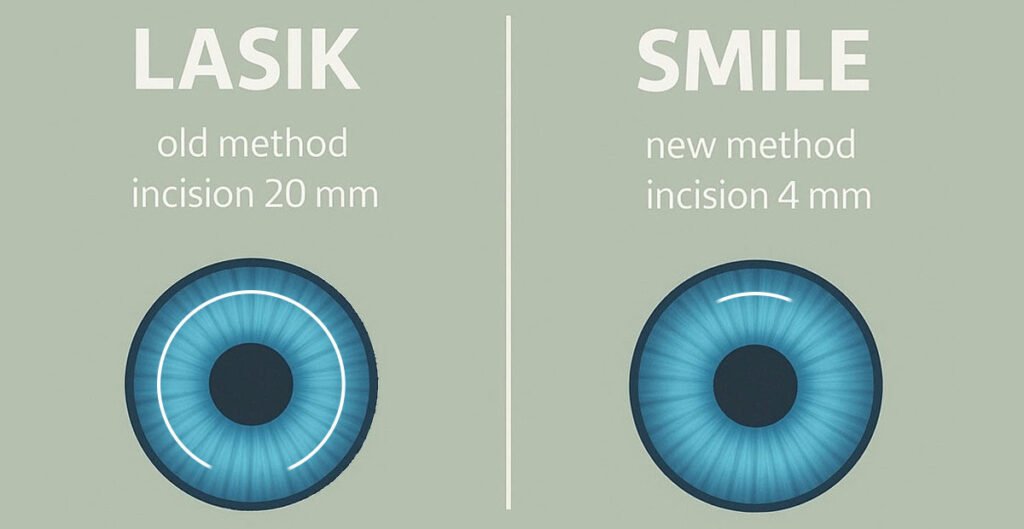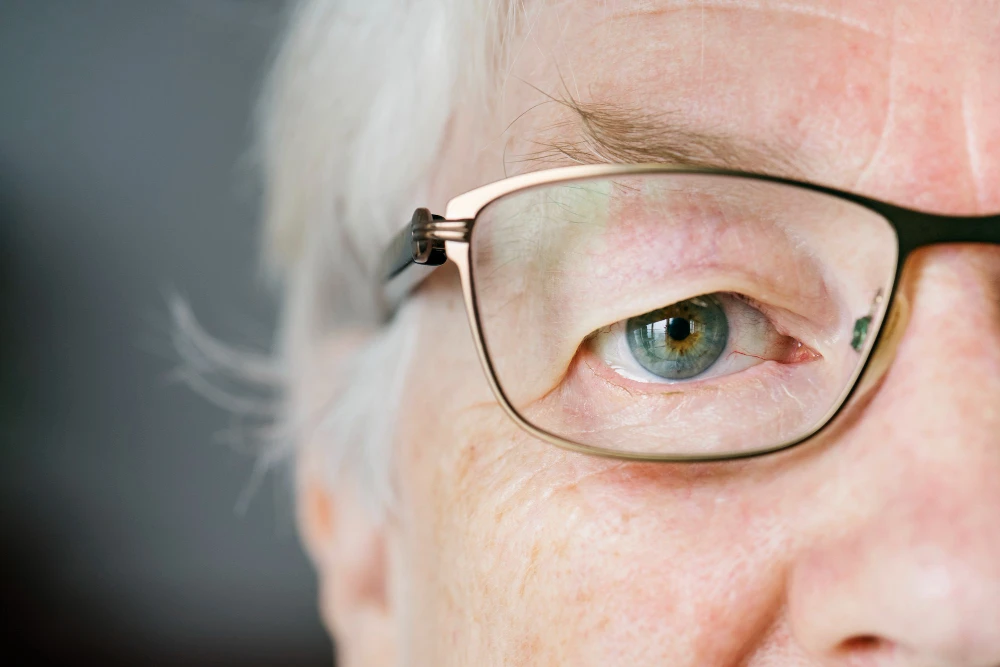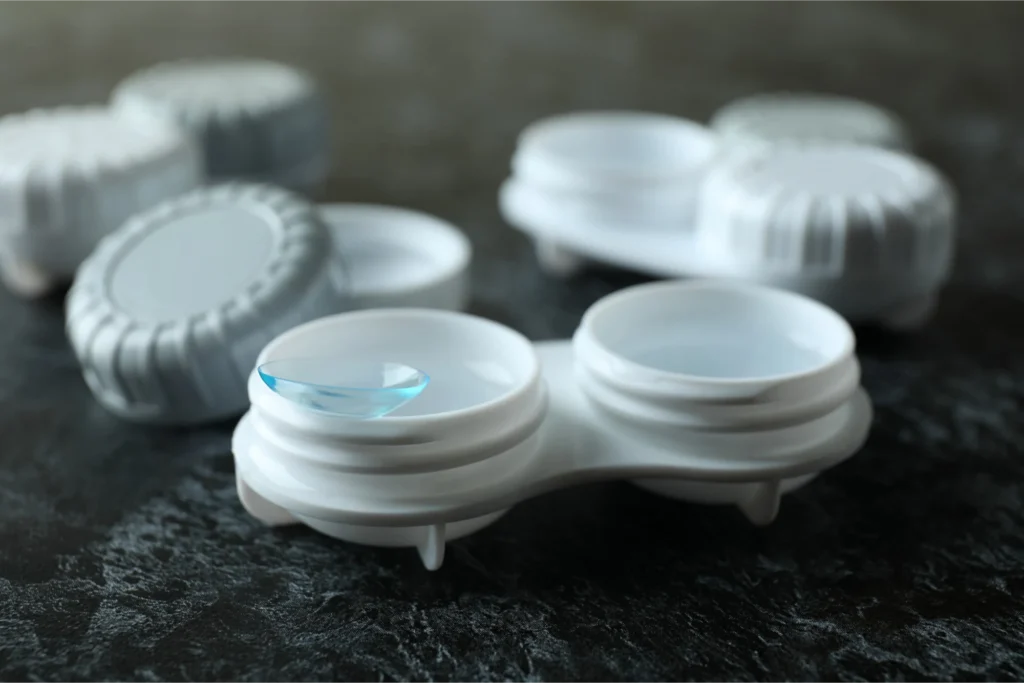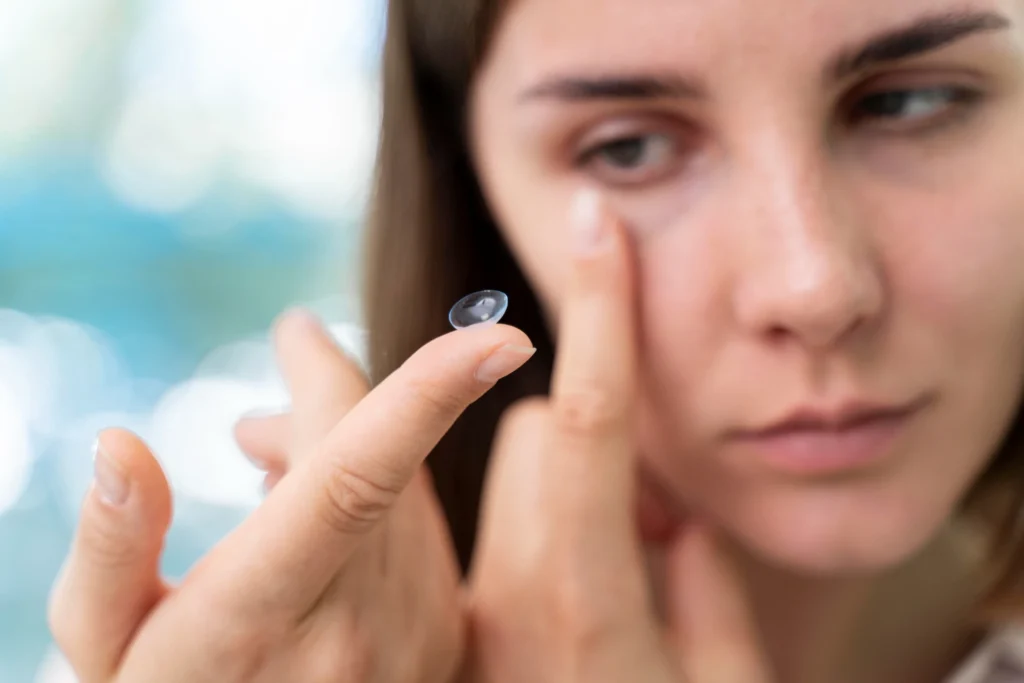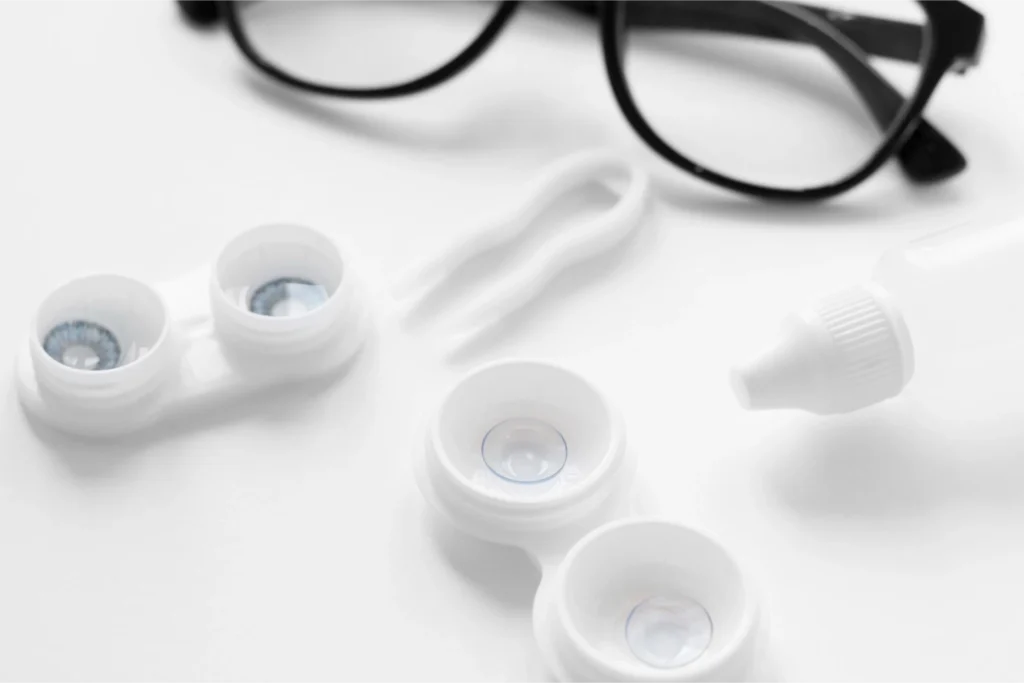Vision correction surgeries have transformed eye care, offering people an opportunity to achieve clearer vision without relying on glasses or contact lenses. Among the most popular procedures are SMILE (Small Incision Lenticule Extraction) and LASIK (Laser-Assisted In Situ Keratomileusis). Both surgeries aim to correct refractive errors and improve vision, but they use different techniques and have unique benefits and risks. Understanding the distinctions between these procedures can help individuals make informed decisions about which option is best suited for their needs.
What is LASIK?
LASIK is a laser eye surgery that has been performed for decades to correct refractive errors such as nearsightedness (myopia), farsightedness (hyperopia), and astigmatism. It involves using a femtosecond laser to create a thin flap on the cornea. This flap is then lifted, and an excimer laser reshapes the underlying corneal tissue to improve how light focuses on the retina. Once the reshaping is complete, the flap is repositioned, acting as a natural bandage that promotes rapid healing.For optimal post-operative care, many patients benefit from LASIK co-management, which involves coordinated follow-up between the surgeon and an optometrist.
Benefits of LASIK:
- Quick Recovery: Many patients experience significantly improved vision within 24 hours.
- Long-Lasting Results: The effects of LASIK are generally permanent, reducing or eliminating the need for corrective lenses.
- Proven Track Record: LASIK has been widely studied and has a long history of safety and success.
- Wide Range of Treatment: LASIK is effective for various refractive errors, making it suitable for many individuals.
Potential Drawbacks:
- Flap-Related Complications: Since a corneal flap is created, there is a small risk of flap displacement or irregular healing.
- Dry Eye Syndrome: Some patients may experience increased dry eye symptoms following the procedure, which can last for several months.
- Not Suitable for Everyone: People with thin corneas, severe refractive errors, or other eye conditions may not qualify for LASIK.
What is SMILE?
SMILE is a more recent advancement in laser eye surgery, designed primarily for the correction of myopia and mild astigmatism. Instead of creating a flap, SMILE uses a femtosecond laser to create a small, lens-shaped piece of tissue (lenticule) within the cornea. This lenticule is then extracted through a tiny incision, permanently reshaping the cornea and improving vision.
Benefits of SMILE:
- Minimally Invasive: The absence of a corneal flap reduces the risk of flap-related complications.
- Less Disruption to Corneal Nerves: This may result in fewer dry eye symptoms post-surgery compared to LASIK.
- Stronger Corneal Structure: Since no flap is created, the cornea retains more of its natural strength.
- Fast Healing Process: Many patients return to normal activities within a day or two.
Potential Drawbacks:
- Limited Treatment Scope: SMILE is currently only approved for myopia and mild astigmatism, not for hyperopia.
- Slightly Slower Visual Recovery: While vision improves rapidly, some patients report that their vision stabilizes a bit slower than with LASIK.
- Fewer Surgeons Offer SMILE: Since SMILE is a newer procedure, not all eye surgeons are trained to perform it.
SMILE Vs LASIK
| Feature | LASIK | SMILE |
| Surgical Technique | Creates a corneal flap and reshapes the underlying tissue | Removes a lenticule through a small incision |
| Suitability | Treats myopia, hyperopia, and astigmatism | Primarily treats myopia and mild astigmatism |
| Recovery Time | Vision improves within a day | Vision stabilizes over a few days to weeks |
| Dry Eye Risk | Higher risk due to nerve disruption | Lower risk, as no flap is created |
| Structural Integrity | Flap creation may weaken cornea | Cornea remains stronger |
| Flap-Related Complications | Possible flap displacement or irregular healing | No flap, reducing such risks |
How Do LASIK and SMILE Work?
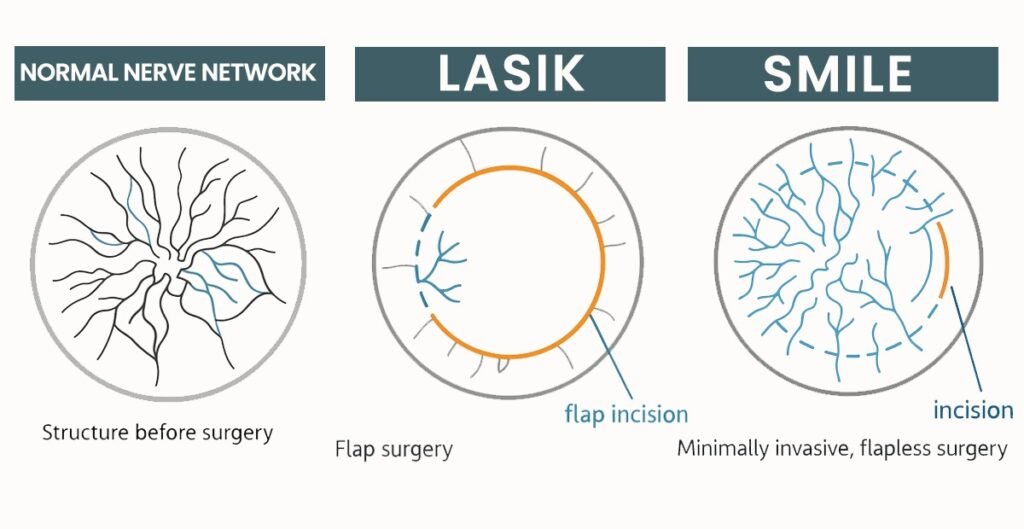
LASIK and SMILE are two popular types of laser eye surgery designed to correct vision problems like nearsightedness, farsightedness, and astigmatism. In LASIK, a surgeon creates a thin flap on the cornea using a laser or blade, then reshapes the underlying corneal tissue with an excimer laser to improve the way light is focused onto the retina. The flap is then gently placed back into position, where it heals naturally without stitches. The procedure is quick, relatively painless, and most patients notice improved vision within a day or two.
SMILE, which stands for Small Incision Lenticule Extraction, is a newer and less invasive alternative to LASIK. Instead of creating a flap, a femtosecond laser is used to carve out a small piece of tissue (called a lenticule) within the cornea. This lenticule is then removed through a tiny incision, reshaping the cornea and correcting the vision. Because SMILE doesn’t involve a large flap, it may reduce the risk of dry eyes and other flap-related complications, making it a preferred choice for some patients.
How to Choose Between SMILE and LASIK
Selecting the right procedure depends on multiple factors, including lifestyle, eye health, and personal preferences. Below are some key considerations:
- Degree of Refractive Error: LASIK is more versatile in treating a broader range of vision problems, while SMILE is primarily for myopia.
- Corneal Thickness: People with thinner corneas may benefit more from SMILE, which preserves more corneal tissue.
- Risk of Dry Eyes: If dry eyes are a concern, SMILE may be the better choice due to reduced nerve disruption.
- Activity Level: If you participate in contact sports or high-impact activities, SMILE may be preferable since there is no corneal flap to dislodge.
- Surgeon Expertise: LASIK is more widely available, whereas SMILE requires specialized training, and not all clinics offer it.
Visit Vision Gallery for a Personalized Consultation
Deciding between SMILE and LASIK is a significant step toward achieving clear vision. The best way to determine the right procedure for you is to consult with experts who can evaluate your eye health and provide personalized recommendations. At Vision Gallery, we offer comprehensive eye assessments and cutting-edge vision correction options to help you make an informed decision.
Take the first step toward clearer vision today! Schedule your consultation at Vision Gallery and discover the best path to visual freedom.
